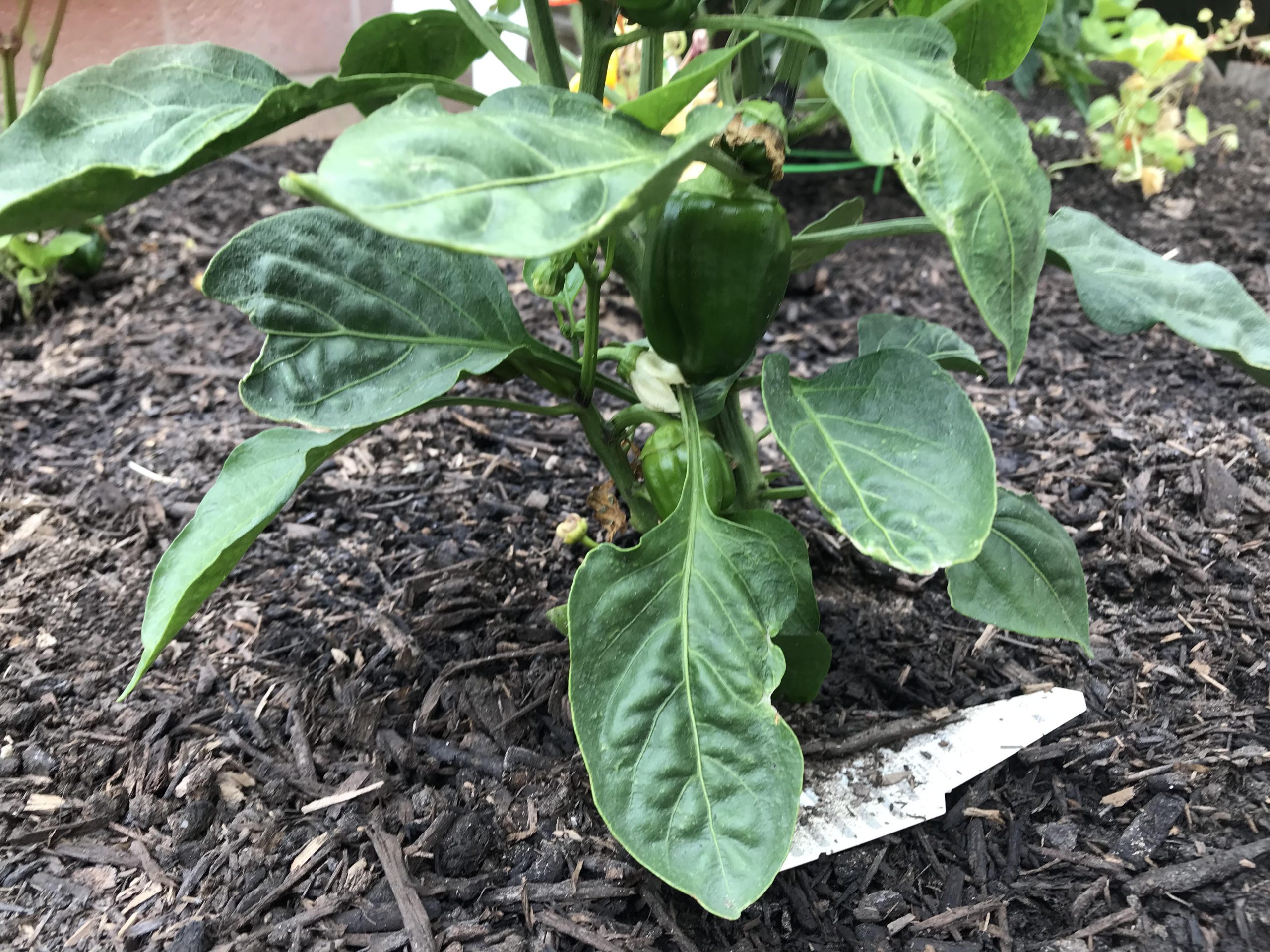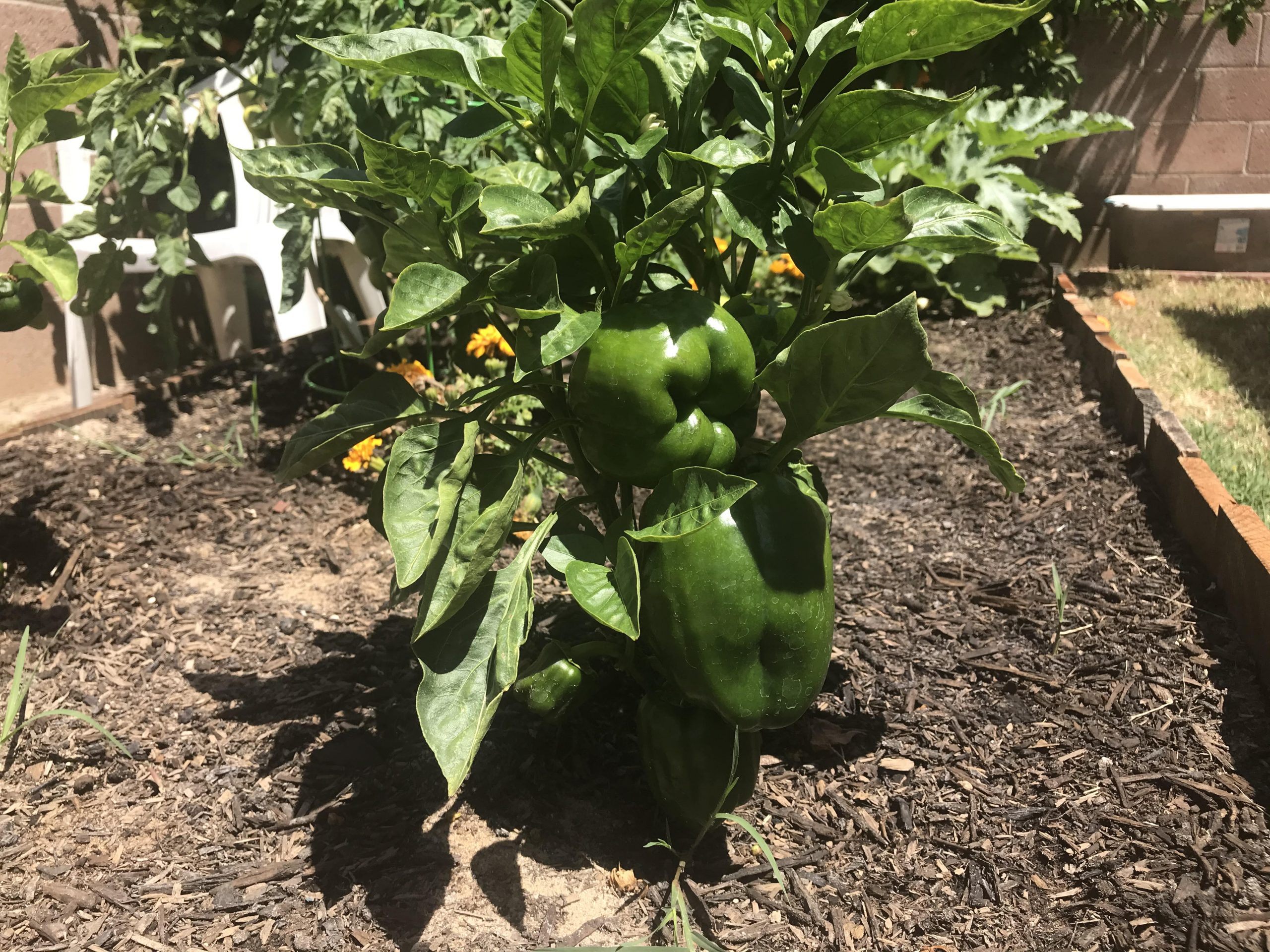
How to Grow Bell Peppers (and Actually Grow the Fruit Too)
I don’t want to deter anyone from trying to grow bell peppers, but they are one of the most annoying plants I’ve had in the garden. I’ll start to see a little tiny fruit bulb, but most of the time they’ll stay the size of a candy corn.
This past summer has been the closest I’ve seen to full grown peppers. Before I go into my trials, let’s get a little more in-depth with these prima donna plants.
Peppers need about 8-9 hours of sunlight a day AND they cannot tolerate night-time temperatures below 55 degrees Fahrenheit. The plant will abort blossoms and/or the fruit will be misshapen. If you happen to live in an area that gets pretty cold at night, you can buy or make a mini greenhouse that covers the peppers and help retain heat. Loose soil works best due to their shallow roots, as well as good drainage. The soil I used for this was on the sandier side and it didn’t seem to be an issue. The downside to sandy soil is that it drains a little too well, so it requires a little more watering to keep it from drying out too quickly.
They do require consistent watering, but they can easily fall victim to being over-watered and can cause blooms to wilt. Best to err on the dry side if you’re not sure how much water the plant should be getting (typically you would only need to deep water 1-2 times a week). It may even help to under water and be dry for a little bit. It can push it to blossom fruit sooner than it would normally. Basically scaring the plant into procreating when it thinks their time is up.
Methods to Jump Start Fruiting
They are slow growers, usually taking up to 60-90 days to mature. But if it’s been a month or two and you still don’t see any actual fruit growing (a la me) then here’s three things you can do to ensure optimum growth:
1. Pinching helps to hasten growth of pepper plants. You would need cut the stem with the topmost leaves off. Make sure the plant has at least ten leaves on it before you do this. The part of the stem that you cut off will split into two new stems, coercing the plant to grow thicker and fuller.
2. If you just planted your transplant/seedling and you start to see some early blossoms, that’s actually not a good thing. This entails that the plant will remain undersized with little to no fruit yields. You can do a method called deadheading, which is just removing the early blossoms. This will allow the plant to divert energy back to the leaves and stem, so it’ll keep growing and produce maturing fruit.
3. Bell pepper plants are heavy feeders, so you want to give it fertilizer with a higher phosphorus content. Best bet would be to use fish meal or bone meal. They have ridiculously high phosphorus content but be sure not to use too much (like about 2 tablespoons for each plants), otherwise you can burn the roots. Fertilize every two to three weeks.
To be honest, I didn’t know half of this stuff three months ago. Over the past couple weeks, however, I’ve picked up a few of those tricks I mentioned earlier. Here’s the progress of my bell pepper plant starting from April to mid June.
A month and a half in I added some much needed compost to this one, and a few weeks later that matured into these delightful fruits.

May 27

May 29

June 14
The last time it fruit like that was in the middle of June. It being August already I have not seen fruit like that since. I’ve added compost a couple times after but to no avail.
As a last stitch effort I added bone meal sometime around beginning of July. I can see now a considerable difference in growth. It’s a lot bushier and they’re are a few blossoming fruits. I did cut off a few of them though to ensure that the energy gets diverted into the special few that will mature. Here is what they look like.

August 1
Bell peppers, and most nightshades in general, can be pretty tricky. But when you decide to make some taco fajitas one night and you go grab that bell pepper from the garden it is oh so worth it.


2 Comments
Danny
Great info and great progress on the BP’s!
Kirven
I have had some success with one pepper plant and none with the one right next to it. I bought soil with nutrients added. The packaging said it was good for 6 months. By then I figured I would have my company going. Our first 2 peppers tasted so good. Awaiting 3 and 4 in a couple days!
I musta say the idea of putting fertilizer in my garden makes me nervous. Do you think compost will be enough?